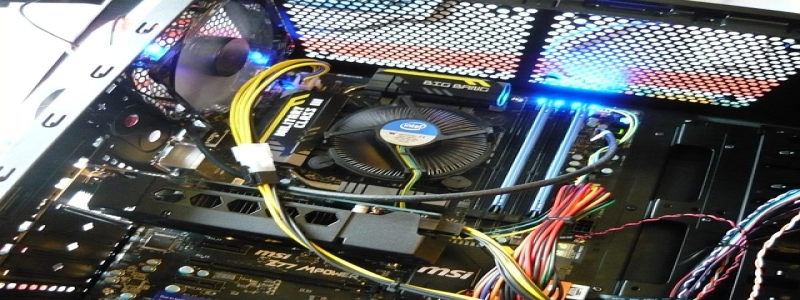SFP Aggregation Switch
1. Introducere
1.1 Overview
1.2 Importance of Aggregation Switches
2. What is an SFP Aggregation Switch?
2.1 Definition
2.2 Features and Functionality
3. Advantages of SFP Aggregation Switches
3.1 Scalability
3.2 Flexibility
3.3 Cost-effectiveness
3.4 Simplified Network Management
4. Use Cases of SFP Aggregation Switches
4.1 Data Centers
4.2 Enterprise Networks
4.3 Service Providers
5. Selection Criteria for SFP Aggregation Switches
5.1 Port Density
5.2 SFP/SFP+ Compatibility
5.3 Power and Cooling Requirements
5.4 Management and Monitoring Capabilities
5.5 Price Considerations
6. Key Considerations for Deployment
6.1 Network Redundancy
6.2 Bandwidth Requirements
6.3 Future Expansion
7. Concluzie
1. Introducere
1.1 Overview
In today’s interconnected world, networks play a critical role in facilitating communication and seamless data transfer. A key component of modern networks is the aggregation switch, which helps consolidate and distribute network traffic efficiently. This article focuses specifically on SFP (Small Form-factor Pluggable) aggregation switches and highlights their significance in network infrastructure.
1.2 Importance of Aggregation Switches
Aggregation switches act as central hubs, enabling multiple devices within a network to connect and exchange data. They offer improved bandwidth management, increased network capacity, and enhanced network performance. SFP aggregation switches, in particular, provide additional benefits due to their small form-factor and compatibility with a wide range of network devices.
2. What is an SFP Aggregation Switch?
2.1 Definition
An SFP aggregation switch is a network device that consolidates network connections from various sources and transmits the aggregated traffic to the appropriate destinations. It utilizes SFP or SFP+ (enhanced Small Form-factor Pluggable) transceivers, which are hot-swappable modules, to connect different types of networking equipment, such as routers, switches, and servers.
2.2 Features and Functionality
SFP aggregation switches offer high port density, allowing numerous devices to be connected simultaneously. They support various network protocols such as Ethernet, Fibre Channel, and SONET/SDH. These switches can provide both copper and fiber optic connectivity options, making them versatile and adaptable to different network requirements.
3. Advantages of SFP Aggregation Switches
3.1 Scalability
SFP aggregation switches are highly scalable, meaning they can accommodate the expanding network demands of growing organizations. With their modular design, additional ports can be added or upgraded easily, allowing for seamless network expansion without significant disruptions.
3.2 Flexibility
SFP aggregation switches support a wide range of SFP or SFP+ modules, enabling connectivity with different types of network interfaces. This flexibility allows organizations to mix and match modules based on their specific needs, ensuring optimal compatibility and performance.
3.3 Cost-effectiveness
Compared to traditional aggregation switches, SFP aggregation switches offer a cost-effective solution. The ability to choose and replace individual SFP modules as needed eliminates the need to invest in a completely new switch when network requirements change. This scalability helps reduce initial investment costs and provides long-term cost savings.
3.4 Simplified Network Management
SFP aggregation switches offer centralized management capabilities, allowing network administrators to effectively monitor and control network traffic from a single point. This simplifies network management tasks, improves troubleshooting capabilities, and enhances overall network performance.
4. Use Cases of SFP Aggregation Switches
4.1 Data Centers
SFP aggregation switches are widely used in data centers to handle the high volume of network traffic generated by servers, storage devices, and other network resources. They provide efficient aggregation of different data streams, ensuring seamless connectivity and optimal performance within the data center environment.
4.2 Enterprise Networks
Enterprises with complex network infrastructures can benefit from SFP aggregation switches to consolidate connections, enhance network efficiency, and reduce maintenance costs. These switches are ideal for organizations with multiple branches or departments that require reliable connectivity and fast data transfer speeds.
4.3 Service Providers
Service providers, such as Internet Service Providers (ISPs), can utilize SFP aggregation switches to manage and aggregate traffic from a diverse customer base. The scalability and flexibility of these switches allow service providers to offer reliable and high-performance connectivity to their customers.
5. Selection Criteria for SFP Aggregation Switches
5.1 Port Density
The number of available ports determines the total number of devices that can be connected to the switch. Organizations should consider their current and future network expansion needs when selecting an SFP aggregation switch with the appropriate port density.
5.2 SFP/SFP+ Compatibility
Ensure that the chosen switch supports the required SFP or SFP+ modules for seamless integration with existing network equipment.
5.3 Power and Cooling Requirements
Consider the power consumption and cooling requirements of the switch to ensure compatibility with the existing infrastructure.
5.4 Management and Monitoring Capabilities
Choose a switch that offers comprehensive management and monitoring features to facilitate network administration tasks and optimize network performance.
5.5 Price Considerations
Evaluate the total cost of ownership, including upfront costs and long-term maintenance expenses, to select the most cost-effective option.
6. Key Considerations for Deployment
6.1 Network Redundancy
Implement redundant SFP aggregation switches to ensure network resilience and reduce the risk of single-point failures.
6.2 Bandwidth Requirements
Analyze the network’s bandwidth requirements and select an SFP aggregation switch that can meet those requirements both currently and in the future.
6.3 Future Expansion
Consider future expansion plans and select a switch that can accommodate increased network demands without requiring a complete infrastructure overhaul.
7. Concluzie
SFP aggregation switches offer significant advantages in terms of scalability, flexibility, cost-effectiveness, and simplified network management. Organizations across various industries can benefit from their ability to aggregate network traffic and enhance overall network performance. When selecting an SFP aggregation switch, careful consideration of key factors, such as port density, compatibility, power requirements, management capabilities, and pricing, will ensure the most suitable choice for the organization’s specific needs. Deploying redundant switches, considering bandwidth requirements, and planning for future expansion will further optimize the network’s efficiency and longevity.








